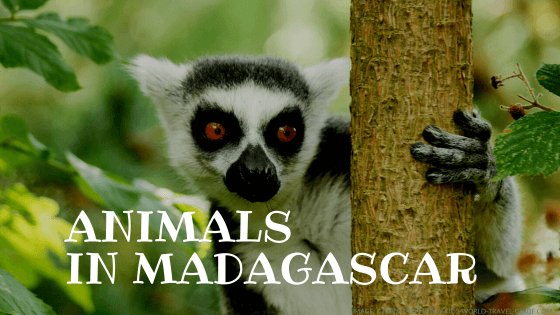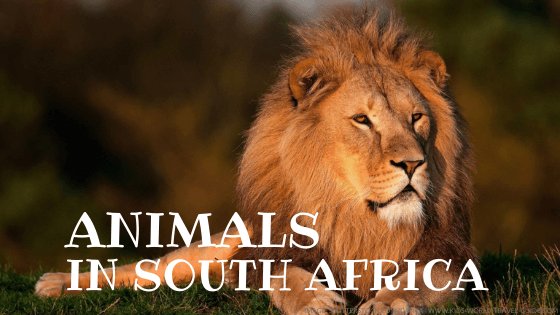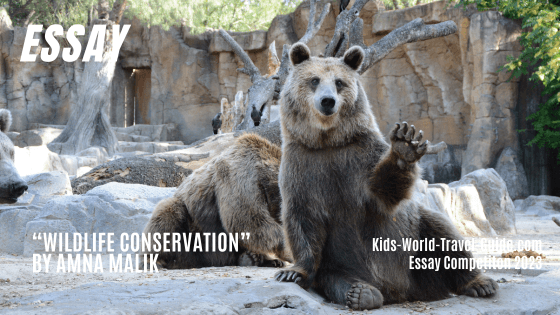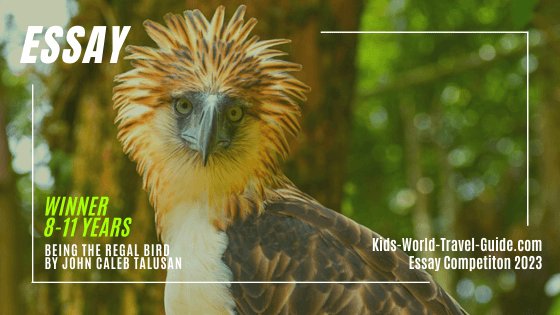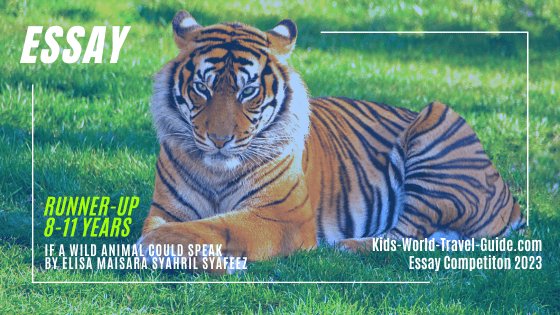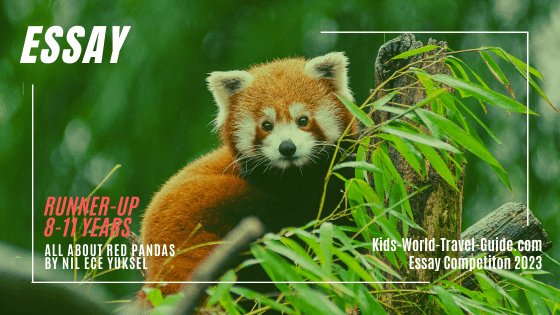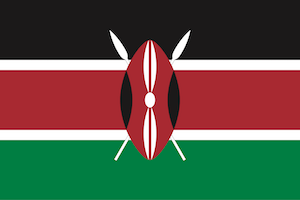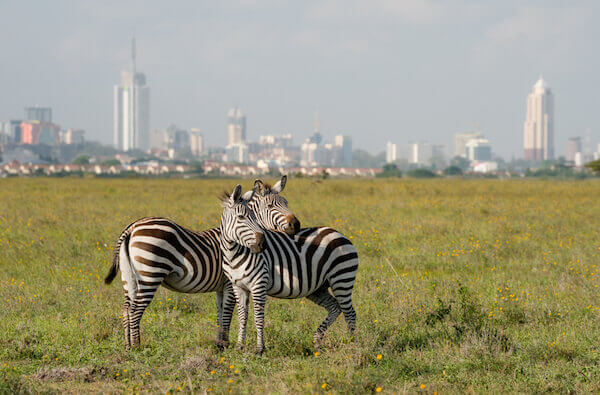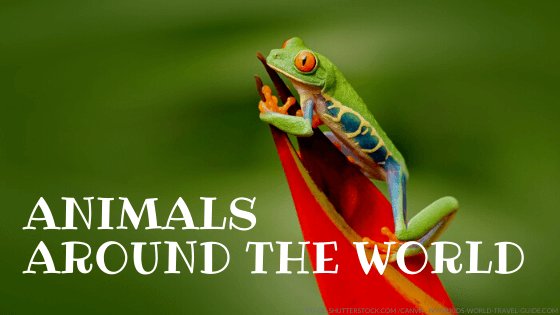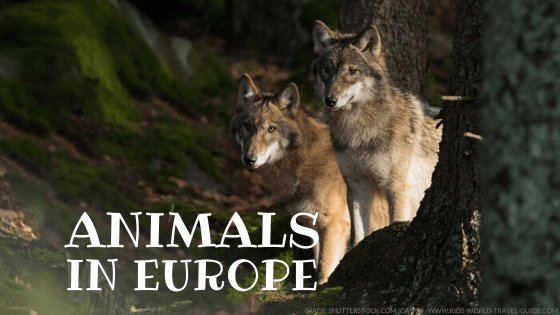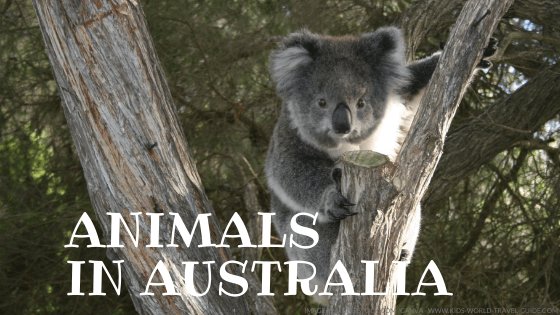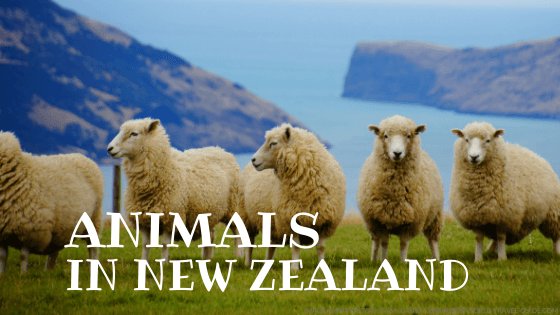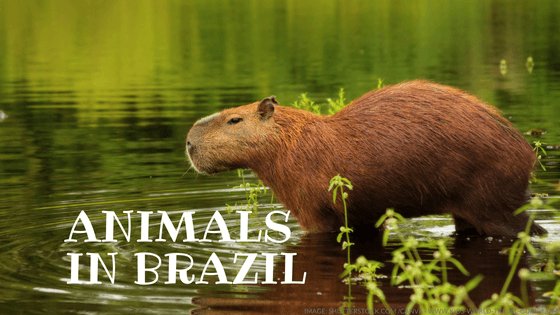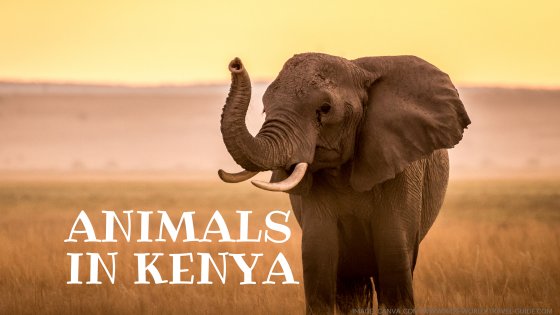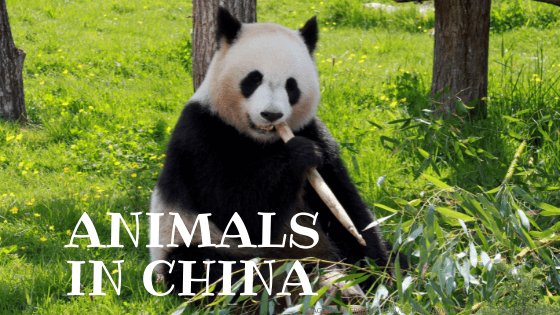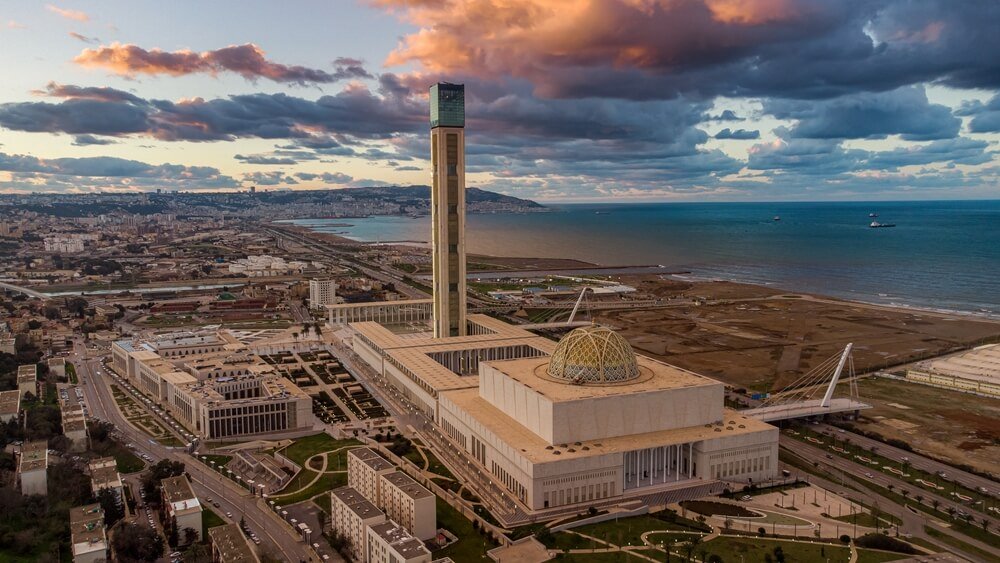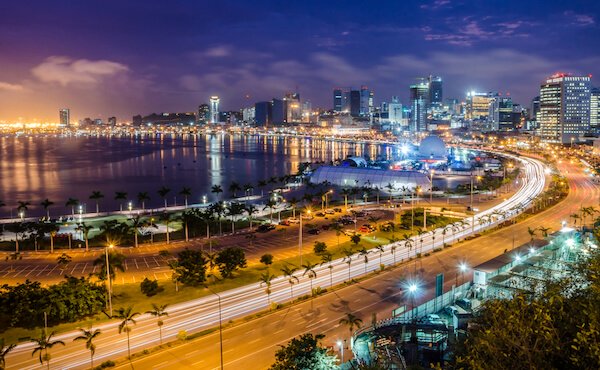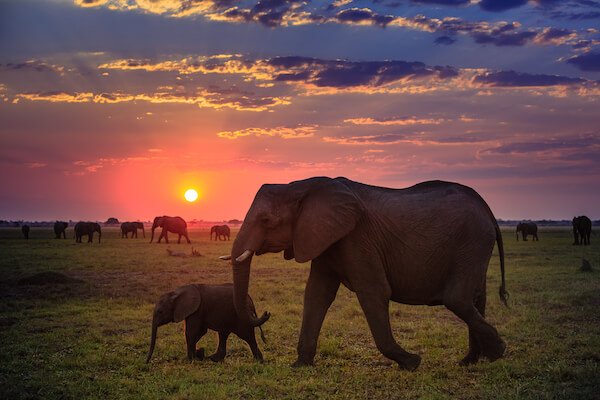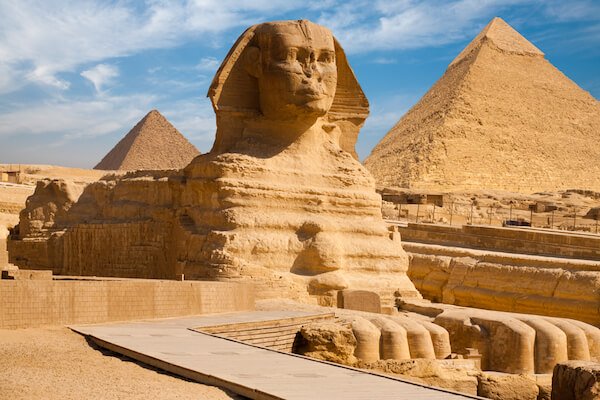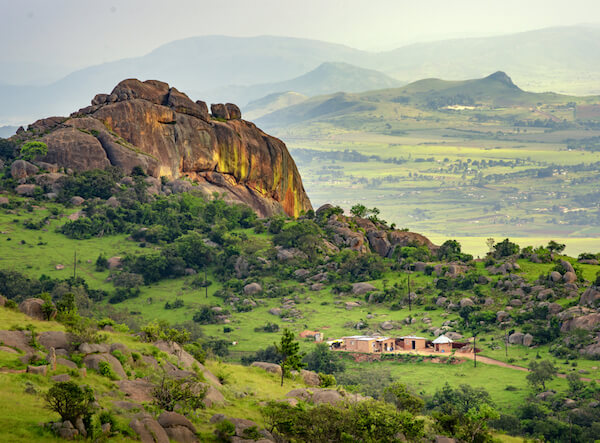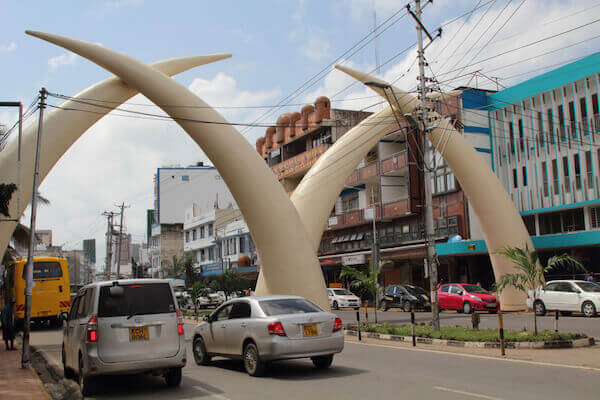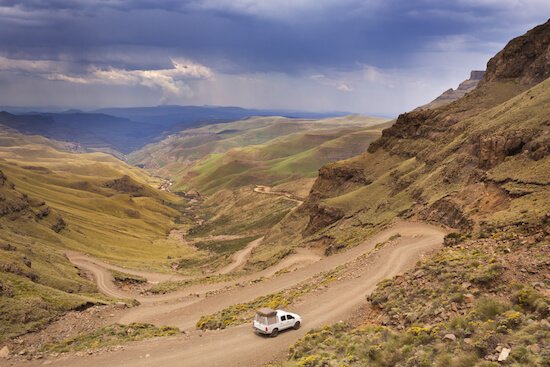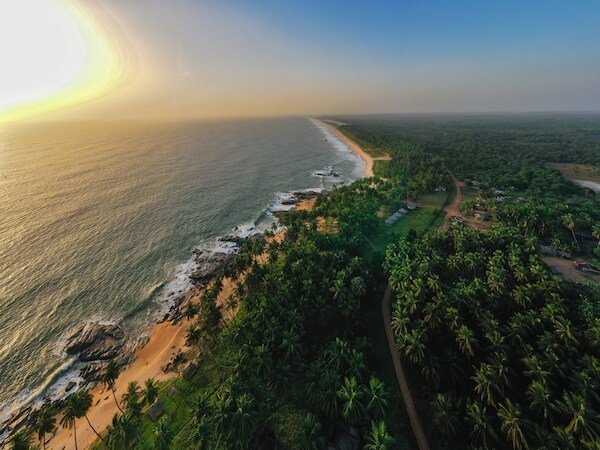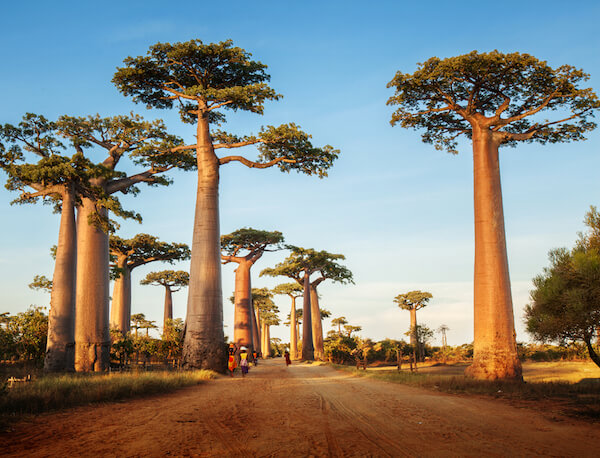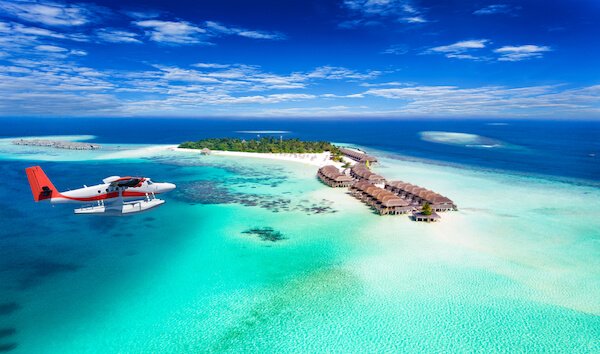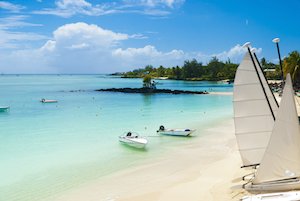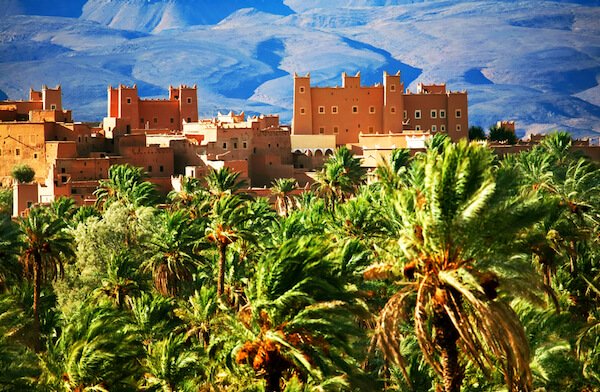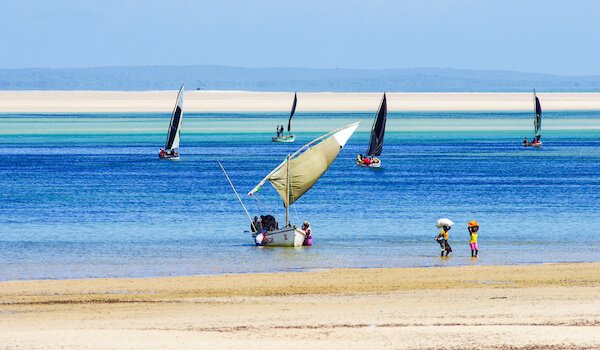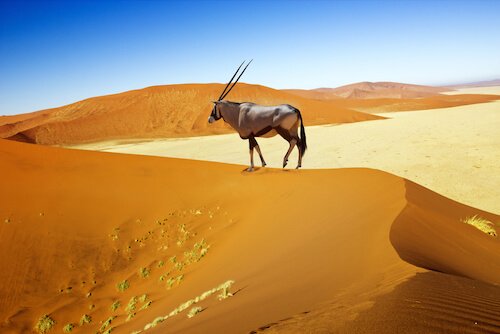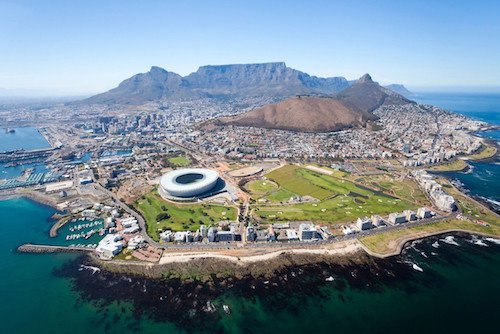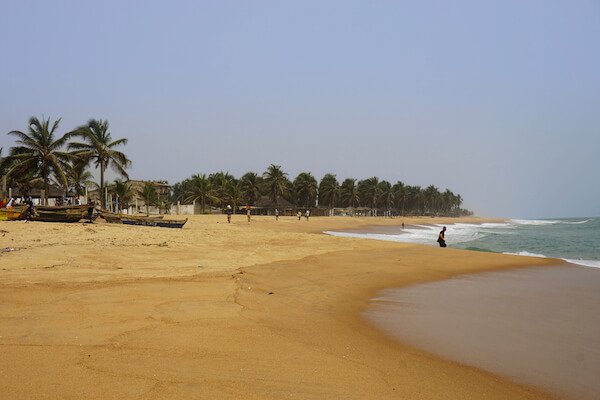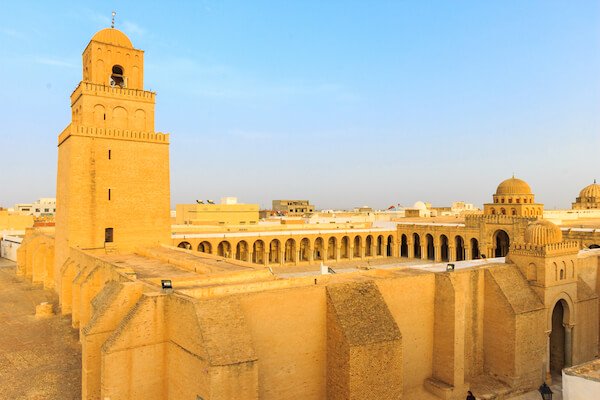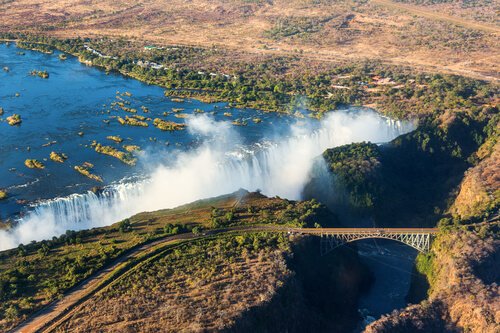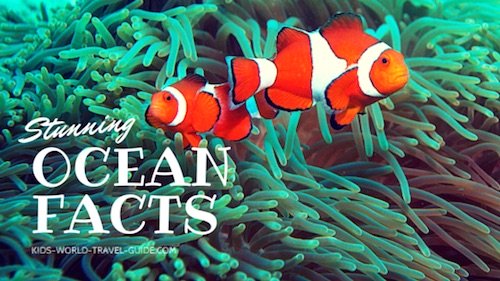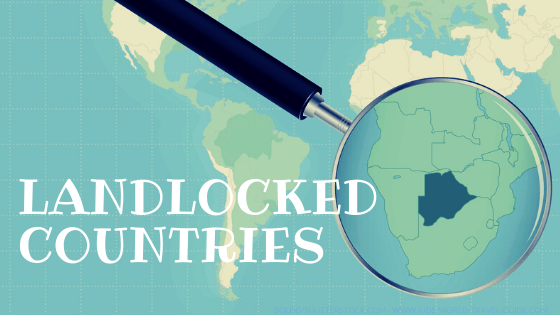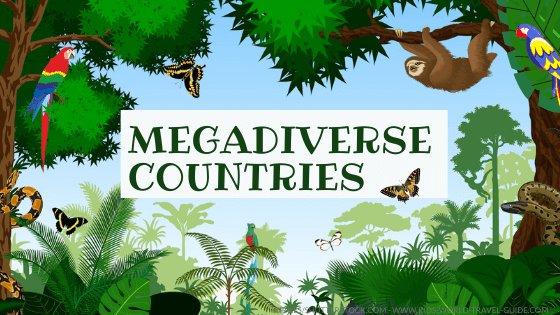Animals in Kenya
Kenya is known for its amazing wildlife. There are so many animals in Kenya to encounter and see when going on safari or when simply exploring this East African country.
We have travelled to magical Kenya and were fascinated by the African wildlife, so we want to share info about some of the unique Kenyan animals.
Which animals in Kenya are you most likely to see?
In Kenya, you will encounter game and many wild animals whether you visit a national park or simply explore any rural areas.
What is unique to Kenya is that Nairobi, Kenya's capital city is the only city in the world that houses a national park within the city borders. Here you can have a safari experience and encounter the "Big Five" (lions, leopard, buffalo, elephant and rhinoceros)!
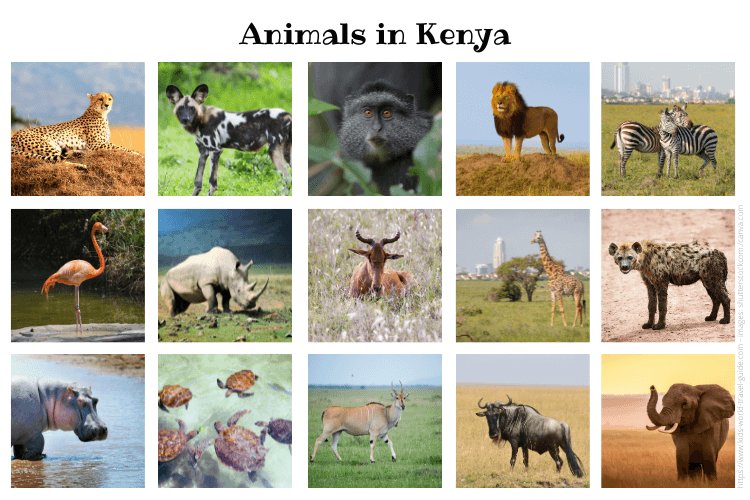 Animals in Kenya
Animals in KenyaIn national parks and private games reserves wildlife is protected from hunters, but you can spot many of the animals also when you just drive out of the capital city into the surrounding countryside.
Kenya Animals
Read more about these fascinating animals in Kenya below.
The country is vast and the Kenyan's savannah also is home to some animals that only live here. Let's start with four animals that only are found in Kenya.
Four Animal that only live in Kenya
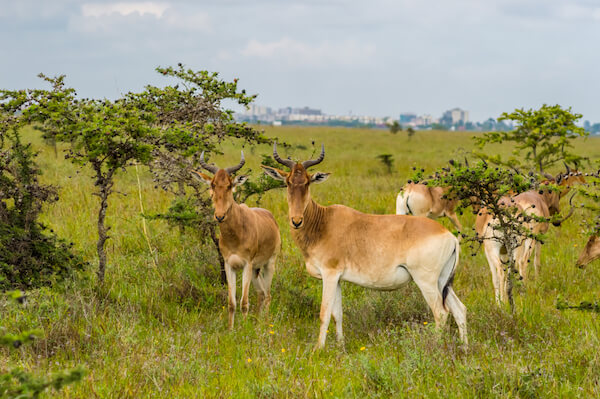 Hirola antelopes in Nairobi Park
Hirola antelopes in Nairobi Park- The Hirola Antelope is a critically endangered species which is only found in the country's north east along the border to Somalia
- The Kenya Horned Viper is a venomous snake that is endemic to the high Central Rift Valley
- The Mount Kenya dwarf chameleon and
- the Mount Kenya mole rat live in the region around Mount Kenya
Animals in Kenya
Among the many animals which you might spot in Kenya are giraffes, zebras, lions, elephants, hippopotamus, cheetas, black and white rhinos, wildebeest (buffalos), hyenas, vultures, black backed jackals, ostriches, antelopes, baboons and as well as flamingos and even turtles. Now let's go there in more detail.
Giraffes
The Kenyan capital city Nairobi is not only known for Nairobi National Park but also for the fabulous Giraffe Center, a wildlife conservation park solely for giraffes.
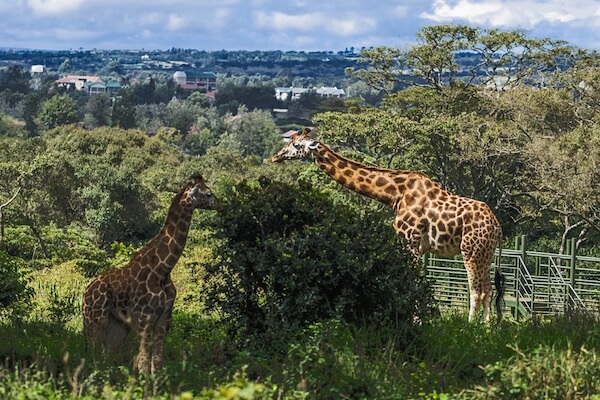 Giraffes at Giraffe Center - image by SbHughes/shutterstock.com
Giraffes at Giraffe Center - image by SbHughes/shutterstock.comThe centre was established in 1979 to start a breeding programme for the endangered Rothschild giraffes which is only found in the Eastern African savannah. The numbers increased drastically to more than 900 giraffes now from the once only 130 Rothschild giraffes that were left in the country in the 1980s.
Elephants
The African elephants can be encountered in Kenya's 23 national parks, 28 national reserves and 4 national sanctuaries.
The most popular national park to watch the African elephants in Kenya is Amboseli National Park offering also glorious views of Africa's tallest mountain, Mount Kilimanjaro in neighbouring Tanzania. Amboseli is home to some of the largest elephant herds in Kenya. Best times to visit are January and February as well as June to September!
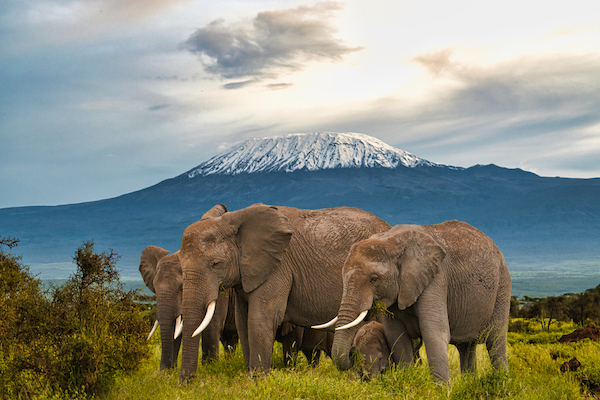 Elephants in Amboseli National Park
Elephants in Amboseli National ParkThere are savannah elephants and forest elephants in Kenya and both African elephants are much larger than Asian elephants which you can easily distinguish. African elephants have much bigger ears than Asian elephants.
Zebras
There are two zebra species in Kenya. The plains zebras which are more commonly spotted and the rare Grevy's zebras. Grevy's zebras are now only endemic in northern Kenya and southern Ethiopia and there are fewer than 3,000 of these endangered species left.
Grevy's zebras (or imperial zebras) are larger than the common plains zebras that are easy to spot in the bushland.
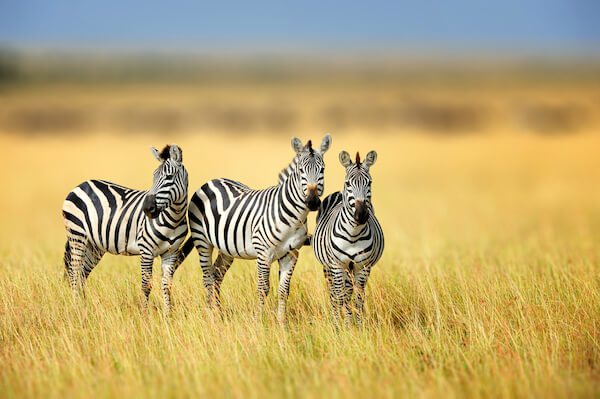 Zebras in Kenya
Zebras in KenyaThe stripes of the plains zebras are wider and more distinct than those of the Grevy's zebras. The single-hoofed mammals are close relatives to horses and live in large herds.
Wild dogs
African Wild Dogs can be encountered in Tsavo National Park, the country's largest national park that is divided into Tsavo East and Tsavo West national parks and is as big as the country of Belgium!
Wild dogs hunt in large packs of 10 to 50 animals. They are highly family-(or pack)-oriented and skillful hunters.
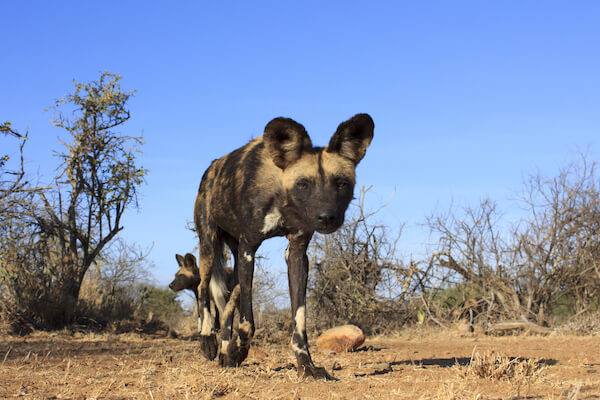
Wild dogs are an endangered species and there are only about 200 wild dogs left in Kenya.
Antelopes | Eland
There are antelopes of all sizes. The common eland is the largest antelope of Kenya and the second largest antelope species in the world - only the giant eland is larger but these antelopes only live in central and western Africa.
The common eland bull can grow up to a shoulder height of 1.6 m/ 5.2 ft. Elands have ridged spiral horns. Elands are the slowest of all antelopes but can trot at a slow speed of 22 km/h or 14 mph over long periods. These plains antelopes mainly are herbivores and graze mainly in big herds.
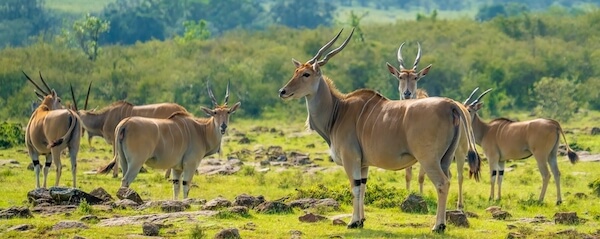 Common eland
Common elandHells Gate National Park in Naivasha, in the Great Rift Valley is known for its varied wildlife and many different antelope species. There are not only elands but also the huge kudus (a striped antelope), the blue wildebeest, the smaller Thomson gazelles or the klipspringer antelopes and the tiny dikdiks.
Klipspringer antelopes have their name from their main activity jumping over cliffs and rocks.
Wildebeest
The wildebeest is among the largest and fastest antelopes in Kenya. The name wildebeest is Afrikaans and means "wild beast". Wildebeest antelopes are also referred to as "gnu". These herbivore mammals can run up to 80km/h or 50 mph.
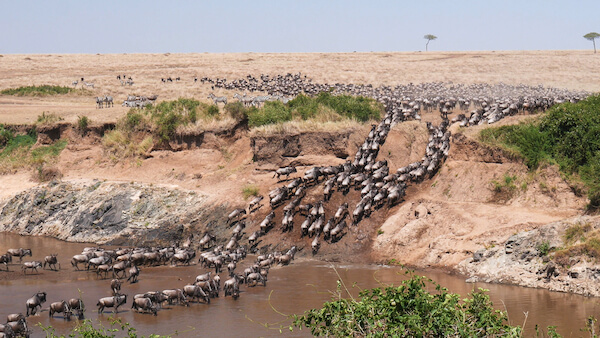 Wildebeest crossing the Mara river in Kenya
Wildebeest crossing the Mara river in KenyaThe annual wildlife migration in the Great Rift Valley is one of nature's most spectacular events. Large herds of wildebeest, zebras and other animals migrate every year between July and September from Tanzania's Serengeti National Park across the Great Rift Valley to Maasai Mara National Park. But in facts this is an annual event taking place year round as the animals move back and forth between the best grazing grounds.
More than 1.2 million wildebeest migrate between the two parks! Both national parks are famous for huge wildebeest herds.
Blue Monkey
Blue monkeys are found in Kenya's forested areas, but they are not really blue, just have a light blue tinge in their face. They live also close to urban settings in Nairobi and eat fruits, leaves and smaller insects.
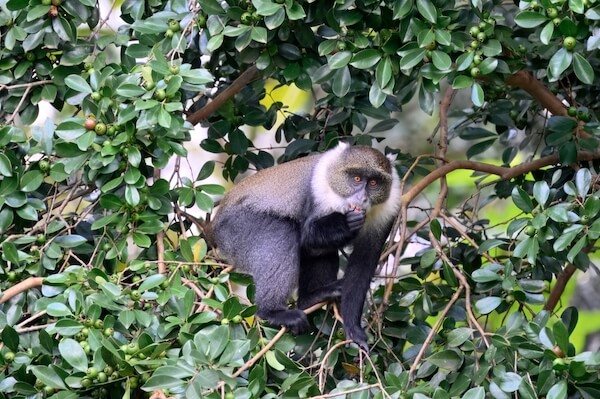 Blue Monkey - image by dmatneck/shutterstock.com
Blue Monkey - image by dmatneck/shutterstock.comBlue monkeys mainly live and stay in tree canopies but they also forage for food on the ground. They are usually quite shy but in some places where they are used to people they can become quite cheeky and steel your glasses or jewellery, anything that blinks and is shiny so catches their attention!
Flamingos
Lake Nakuru in Kenya's northern region is well known for the large flamingo population.
There are six flamingo species of which the lesser flamingo has the largest population.
 Flamingos at Lake Nakuru
Flamingos at Lake NakuruHowever, the lesser flamingo population is shrinking due to the declining availability of the blue-green algae that grown in the waters. As the water levels rise due to increased rainfall and deforestation, the size of the lake almost doubled in recent decades, there is less food for the flamingos as when the amount of chlorophyll sinks, less algae is growing.
Nile crocodile
Lake Turkana is a major breeding ground for the Nile crocodile and home to the world's largest population of this species with about 12,000 Nile crocodiles. The most saline lake of East Africa and largest permanent desert lake of our planet is home to a large variety of fish and the Nile crocodile.
The Nile crocodile is the largest predator in Africa and can grow up to 5m/ 16.5 ft and weigh up to 750 kg/ 1,653 lbs.
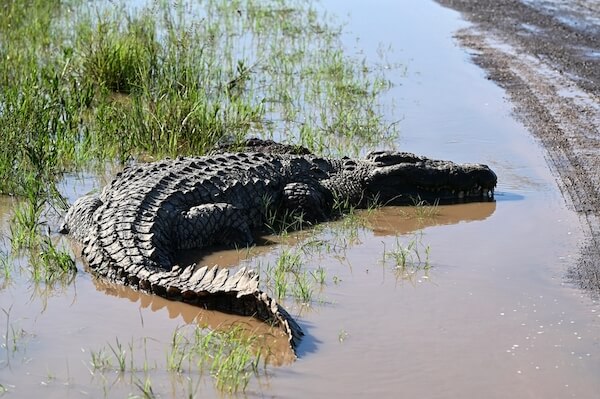 Nile crocodile - image by Dmatneck/shutterstock.com
Nile crocodile - image by Dmatneck/shutterstock.comThe huge crocodiles hunt and attack sea and land prey but can often be seen motionless in the shallow brackish waters of the lake. These crocodiles can survive for long periods, up to several months, without food.
Lake Turkana is the largest alkaline lake in the world and the only lake that still contains water from the original catchment areas of the Nile river. As the lake in the Rift Valley was originally connected to the White Nile, the Nile crocodiles are unique to only this region in Kenya.
The lake in the Great Rift Valley is also home to many fish species and a unique Turkana mud turtle, a species that only exists here.
Spotted Hyena
Hyenas are the most common large carnivore in Kenya. They are very social animals and hunt in big packs. Spotted hyenas are even seen in urban areas and most widely distributed throughout central and northern Kenya.
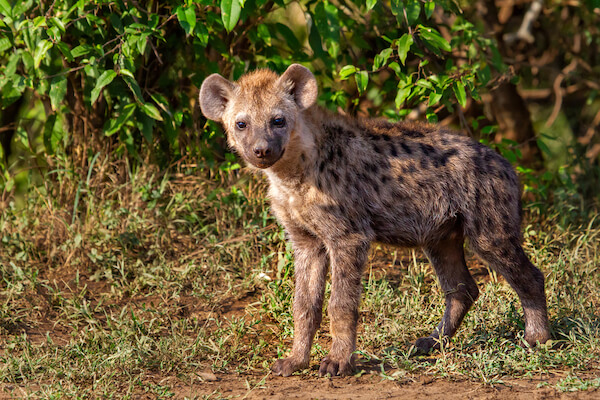 Spotted hyena
Spotted hyenaGreen sea turtle
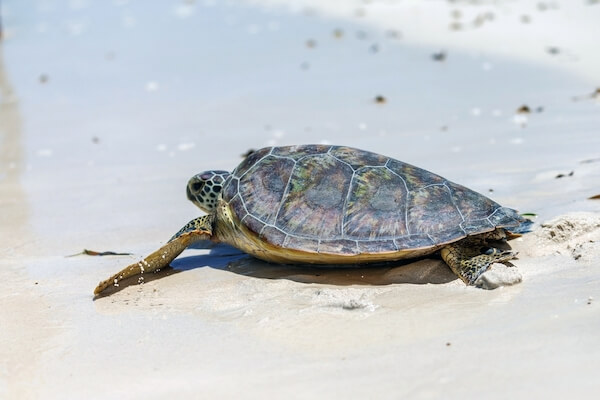
Lion
There are still about 2,500 lions in Kenya, but their numbers are still declining due to loss of habitats and hunting. Droughts, wildfires and poaching has a dismal effect on the lion population. Most of the majestic large cats in Kenya live today in the Tsavo conservancy region, Maasai Mara National Park and Amboseli National Park.
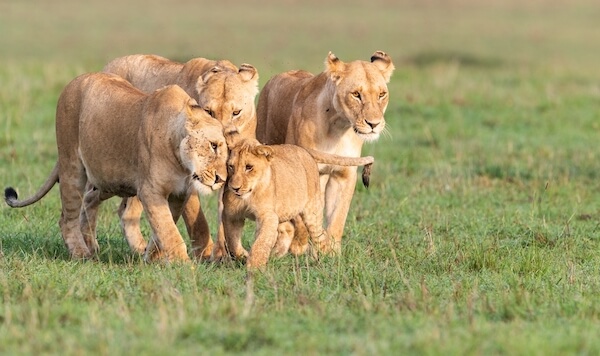 Pride of lions
Pride of lionsLions live in prides of 10-20 family members and hunt their prey in groups and their main food consists of wildebeest, zebra, warthogs and buffalos.
Did you know that lion cubs are born with blue eyes? Their eye colour only changes when the young lions are about two months old.
Leopard
The leopard is the smallest and strongest climber of all the four "big cats" (lion, tiger, jaguar and leopard), which means you most likely will spot them on a tree - if you are lucky. The shy animal mainly roams and hunts during night time. The diet of leopards ranges from birds and and hares to warthogs, antelopes, and baboons.
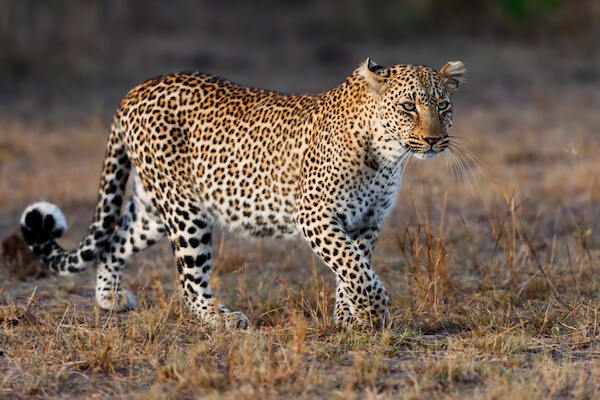
Leopards tend to live alone except when they are mating or have young cubs.
Rhinoceros
There are two rhinoceros species in Kenya and they are both vulnerable and endangered species as they sadly still are hunted for their beautiful horn. You can distinguish them according to the shape of their lip and feeding activities.
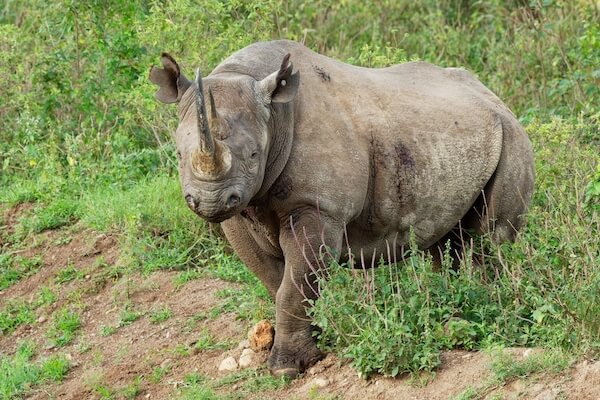 Rhino - but which species is this?
Rhino - but which species is this?The black rhino or hook-lipped rhino has a pointed upper lip and smaller skull and ears than the white rhino. The black rhino is a browser and feeds on leaves, fruit and branches of bushes. Ol Pejeta Conservancy in central Kenya is the largest black rhino sanctuary in East Africa and houses about one quarter of the country's critically endangered black rhino population.
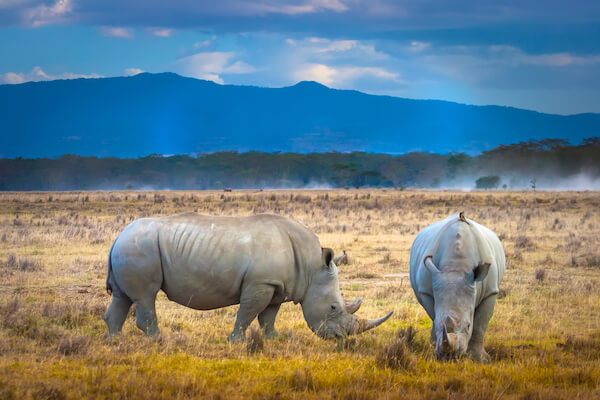 White rhino
White rhinoThe white rhino or square-lipped rhino with the broad lip that seems to be always smiling, is a grazing mammal, searching for food on the ground. The white rhino population was introduced to Kenya from South African populations from the 1960s onwards for conservation purposes.
Giant eagle owl
The giant eagle owl lives mainly in the sub-Saharan savannah and is the largest of the African owl species.
This own has grey feathers and pink eyelids like no other owl. Their diet consists of birds, insects and even mammals.
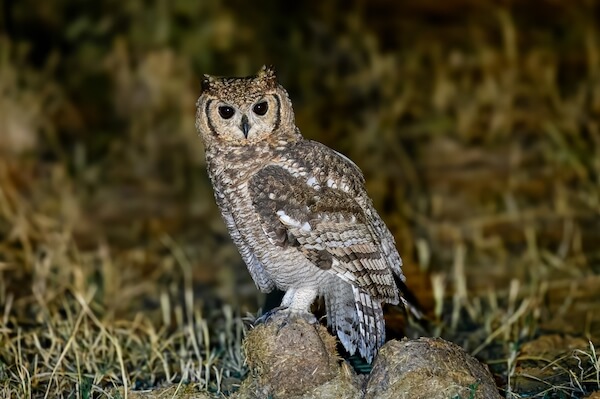 Giant Eagle Owl - image by dmatneck/shutterstock.com
Giant Eagle Owl - image by dmatneck/shutterstock.comAnimals in Kenya: Great resources for further reading
- Giraffe Center. "Blog: 40th Anniversary." GiraffeCenter.org. Last accessed 14 August 2025
- Abi Cushman & P.A. Smith. "African Elephant." Animal Facts Guide. Last accessed 14 August 2025
- Kenya Wildlife Service. "Tsavo West". Kws. Last accessed 14 August 2025
- Cheetah Safaris. "Migration tracker." WildebeestSightings. Last accessed 14 August 2025
- Elisabeth Pennisi. "As the lakes that flamingos inhabit expand, the birds’ food supplies are rapidly shrinking". Science.org. Posted 12 April 2024. Last accessed 14 August 2025
- Nicolas Urlacher. "Black Rhinoceros." WildlifeofKenya. Last accessed 14 August 2025
Read more about Wildlife in Africa
More about Wildlife
Competition Winners 2024
Competition Winners 2023
Photo credits on animals in Kenya page: Own images, canvas.com and Shutterstock.com images.
Competition Winners 2024
Return from Animals in Kenya to KidsWorldTravelGuide Homepage
***
More Countries in Africa
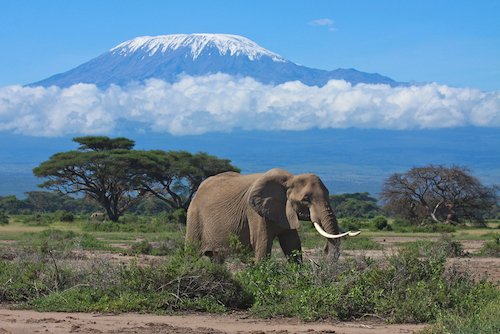 Tanzania
Tanzania***
Spread the News

